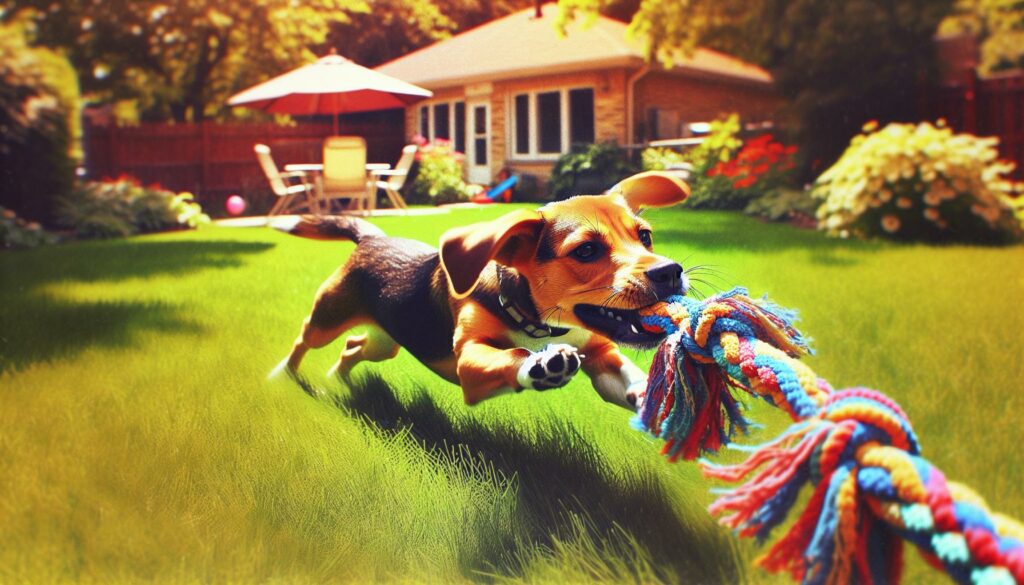As a dog owner for over 15 years, I’ve witnessed the fascinating journey from puppyhood to adulthood in multiple dogs. One of the most challenging yet entertaining phases is the teenage period – yes, dogs experience adolescence too!
Just like humans, dogs go through significant physical and behavioral changes during their teenage years. I’ve noticed that many pet parents struggle to understand when this phase begins and how long it lasts since dogs mature at different rates than humans. While a human teenager might be 13-19 years old, a dog’s adolescent period starts much earlier and progresses more quickly. This knowledge has helped me navigate the rebellious phase with my own furry companions.
Key Takeaways
- Dogs enter their teenage phase between 6-12 months of age, with small breeds maturing faster than large breeds
- Physical signs of dog adolescence include rapid growth, adult teeth development, and sexual maturity changes
- Teenage dogs often display challenging behaviors like testing boundaries, selective listening, and increased energy levels
- Different breeds progress through adolescence at varying rates – small breeds complete development by 12 months while large breeds take up to 24 months
- Managing teenage dogs requires consistent training, adequate exercise (30-90 minutes daily), and mental stimulation through games and activities
What Age Are Dogs Teenagers
Dogs progress through distinct developmental stages at a faster rate than humans, making it essential to recognize these phases for proper care and training.
Puppy Years vs Human Years
Dogs age approximately 15 human years during their first year of life. Here’s a breakdown of the age conversion:
| Dog Age | Small Breeds | Medium Breeds | Large Breeds |
|---|---|---|---|
| 1 year | 15 years | 15 years | 15 years |
| 2 years | 24 years | 24 years | 22 years |
| 5 years | 36 years | 36 years | 33 years |
I’ve observed that smaller breeds mature more slowly than larger breeds, yet they typically live longer. A Chihuahua reaches physical maturity at 12-15 months, while a Great Dane completes growth by 18-24 months.
When Dogs Enter Adolescence
Dogs enter their teenage phase between 6-12 months of age. I’ve noticed these key indicators of adolescence:
- Testing boundaries through selective listening to commands
- Increased energy levels requiring additional exercise
- Heightened interest in exploring the environment
- Intensified reaction to other dogs
- Changes in marking behavior
- Secondary teeth completion
- Growth plate closure
Large breeds experience a longer adolescent period compared to smaller breeds. My experience shows that a German Shepherd’s teenage phase lasts 12-18 months, while a Yorkshire Terrier’s phase spans 8-12 months.
Physical Changes During Dog Teenage Years

Physical transformations in teenage dogs mirror their behavioral changes, marking a significant period of development between puppyhood and adulthood.
Growth and Development Signs
Teenage dogs experience rapid skeletal growth accompanied by visible physical changes:
- Increased height by 20-30% within 3-4 months
- Adult teeth replacement completes between 6-8 months
- Muscle mass development intensifies at 8-10 months
- Coat texture changes from puppy fur to adult coat
- Sexual maturity indicators appear at 6-12 months
- Paw size reaches adult proportions
| Breed Size | Growth Completion Age |
|---|---|
| Small | 9-12 months |
| Medium | 12-15 months |
| Large | 18-24 months |
- Testosterone levels rise 5-7 times in male dogs
- Estrogen production increases in females
- Sexual organ development accelerates
- Scent gland activation becomes prominent
- Body odor changes become noticeable
- Growth hormone production peaks
| Hormone Change | Timeline |
|---|---|
| Sex Hormones | 6-8 months |
| Growth Hormones | 4-12 months |
| Metabolism Rate | 8-14 months |
Behavioral Signs of a Teenage Dog

Teenage dogs display distinct behavioral patterns that signal their transition into adolescence. I’ve observed these changes consistently across various breeds during my 15 years of dog ownership.
Testing Boundaries and Independence
Teenage dogs exhibit increased defiance through specific behavioral changes:
- Ignoring previously learned commands like “sit” “stay” or “come”
- Pulling harder on leash walks despite prior leash training
- Chewing inappropriate objects such as furniture pillows blankets
- Breaking house rules by jumping on counters or furniture
- Displaying selective hearing especially in outdoor environments
- Attempting to venture farther during walks or in open spaces
- Showing resistance to regular routines like bedtime crate entry
- Challenging established pack hierarchies with older dogs
- Displaying heightened territorial behavior at dog parks
- Shifting from submissive puppy play to assertive interactions
- Marking territory more frequently during walks
- Testing boundaries with previously friendly dog companions
- Exhibiting increased interest in dogs of opposite sex
- Demonstrating stronger reactions to unfamiliar dogs
- Developing specific preferences for playmates based on size energy levels
- Showing changes in play style from gentle to more rough-and-tumble
| Behavioral Change | Typical Age of Onset | Duration |
|---|---|---|
| Boundary Testing | 6-8 months | 2-4 months |
| Social Hierarchy Changes | 7-9 months | 3-5 months |
| Territorial Marking | 6-12 months | Ongoing |
Managing Your Dog’s Teenage Phase

Managing a teenage dog requires consistent training protocols adaptable behavioral strategies. I’ve found that understanding their unique needs during this phase creates a more harmonious relationship between pet parents and their adolescent dogs.
Training Tips for Adolescent Dogs
I implement these proven training strategies for teenage dogs:
- Maintain short 5-10 minute training sessions 3 times daily
- Reinforce basic commands like “sit” “stay” “come” with high-value treats
- Practice leash training exercises before walks to establish control
- Use positive reinforcement techniques when responding to defiant behavior
- Create clear boundaries by blocking access to restricted areas
- Establish a consistent daily routine for feeding sleeping training times
Exercise and Mental Stimulation Needs
Teenage dogs require structured physical activities and mental enrichment:
Physical Exercise:
- 30-60 minutes of high-intensity exercise twice daily
- Supervised off-leash play in secure areas
- Interactive games like fetch tug-of-war frisbee
- Swimming sessions for low-impact exercise
Mental Stimulation:
- Food puzzle toys filled with kibble or treats
- Hide-and-seek games with toys or treats
- Basic nose work exercises using scent trails
- Training new tricks or commands weekly
- Rotating toy selection every 3-4 days
- Social interactions with well-behaved dogs in controlled settings
| Dog Size | Daily Exercise | Mental Games |
|---|---|---|
| Small | 30-45 minutes | 2-3 sessions |
| Medium | 45-60 minutes | 3-4 sessions |
| Large | 60-90 minutes | 4-5 sessions |
Special Considerations for Different Breeds
Different dog breeds enter and progress through their teenage years at varying rates based on their genetic makeup and size. I’ve observed distinct patterns in how various breeds navigate this crucial developmental phase.
Small vs Large Breed Development
Small breeds (under 20 pounds) reach teenage years at 6-8 months and complete development by 12 months, while large breeds (over 50 pounds) enter adolescence at 8-10 months and mature by 24 months. Here’s a breakdown of key developmental milestones:
| Breed Size | Teenage Phase Start | Full Maturity | Growth Rate |
|---|---|---|---|
| Small | 6-8 months | 12 months | 1.5x birth size |
| Medium | 7-9 months | 15 months | 2x birth size |
| Large | 8-10 months | 24 months | 3x birth size |
Specific breed examples showcase these variations:
- Chihuahuas mature by 12 months with minimal physical changes after teenage phase
- Beagles complete development at 15 months with moderate growth spurts
- Great Danes continue growing until 24 months with extended skeletal development
Growth characteristics by breed size:
- Small breeds experience rapid early development followed by slower teenage growth
- Medium breeds show steady growth throughout adolescence
- Large breeds undergo prolonged growth phases with multiple developmental spurts
- Training requirements during teenage months
- Exercise intensity limitations
- Social development milestones
- Nutritional needs throughout maturation
Furry Friend
Understanding your dog’s teenage phase is crucial for navigating this challenging yet rewarding period. I’ve learned that each breed experiences adolescence differently with varying timelines and intensity of changes.
By recognizing the signs of adolescence and adapting my training approach I’ve successfully guided multiple dogs through their teenage years. It’s important to remember that this phase is temporary and with patience consistent training and plenty of love your furry friend will develop into a well-adjusted adult dog.
Supporting your dog through adolescence while maintaining clear boundaries and positive reinforcement will strengthen your bond for years to come.

